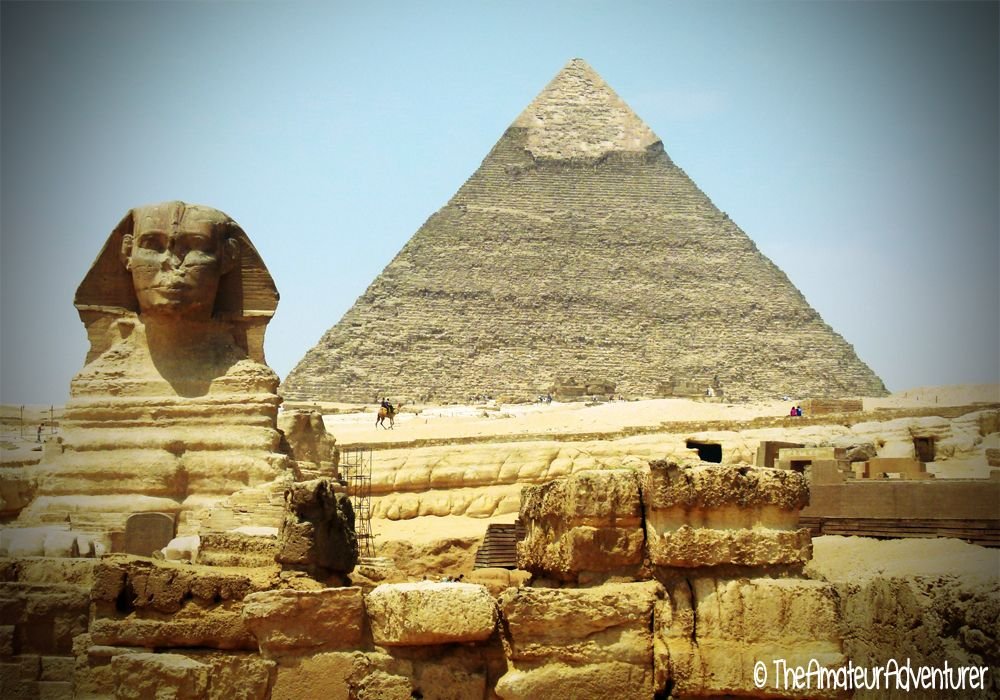
Hello lovely Steemians
Today's adventure marks the end of our time in Egypt, and of course what better place to finish than with a visit to Giza to see the Sphinx and the Great Pyramid
It's been a blast sharing my adventures in Egypt with you. I hope you enjoy this last installment.

Memphis & Saqqara
It is hard to imagine the vast enormity of the ancient Egyptian capitol city of Memphis. Most historians believe it extended approximately nineteen miles along the eastern shore of the Nile. If the size of the city alone is not impressive, the age is mind-boggling. It is long held to have been founded by the first pharaoh of the first dynasty, and was the first capitol of a united Egypt – making it well over five thousand years old!
Statue of Ramesses II at Memphis
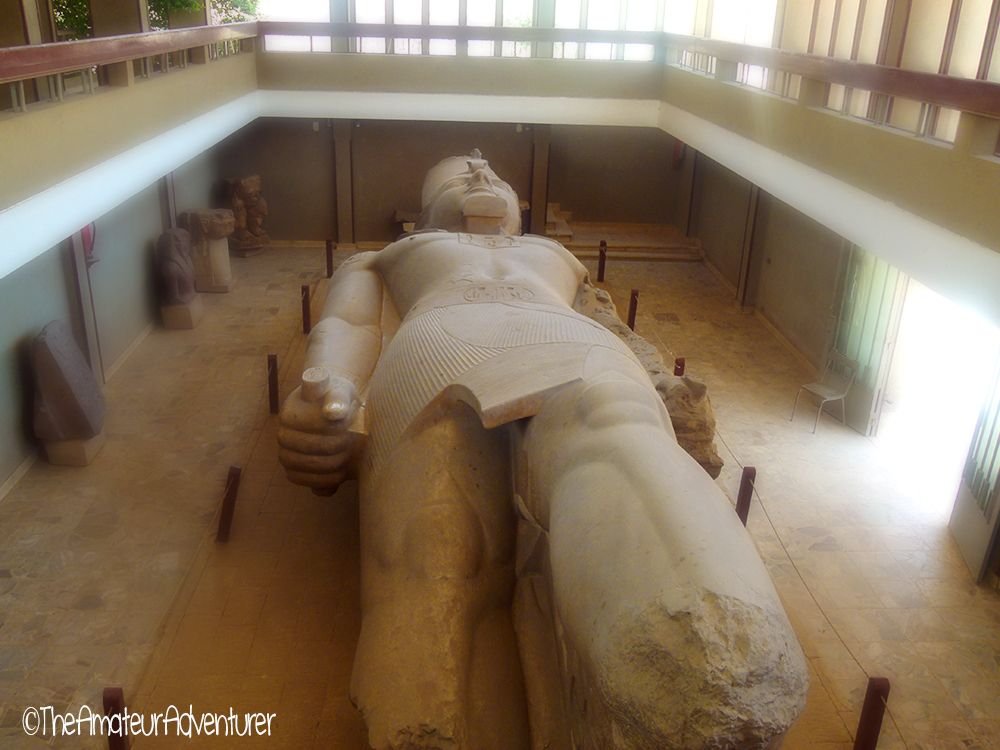
For centuries Memphis, Egypt was the political and administrative hub of the country, and nearby Saqqara with its vast number of royal burial sites attests to the significance of the area. Even after the turmoil created by the reign Akhenaton, who relocated the capital to Thebes and built his own special temples to the Aton, or sun, the pharaoh Tutankhamun returned to Memphis.
As centuries passed however, Memphis began to fade as a powerful location and with the end of Pharaonic Egypt came the dismantling of many of Memphis’ temples and large structures. Medieval construction in Cairo and the rise of Alexandria caused much destruction in the once grand city.
Statues at Memphis
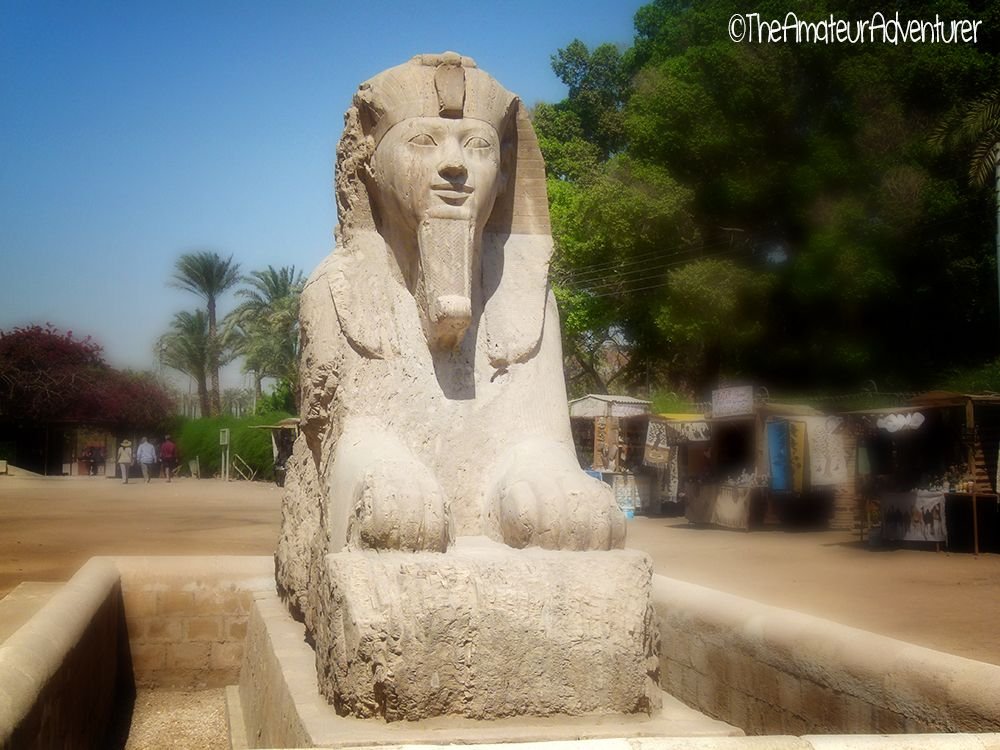
Today, all that remains of this city is an open air museum with a few recovered monuments, the giant statue of Rameses II the main attraction.
Nearby Saqqara was the necropolis for Memphis. Used as a burial ground for thousands of years, Saqqara hides its secrets well under desert sands. Despite virtually continuous excavations for some two centuries, much of the area remains to be excavated. The site stretches six kilometres from north to south and more than 1.5 kilometres across at its widest point.
Step Pyramid at Saqqara
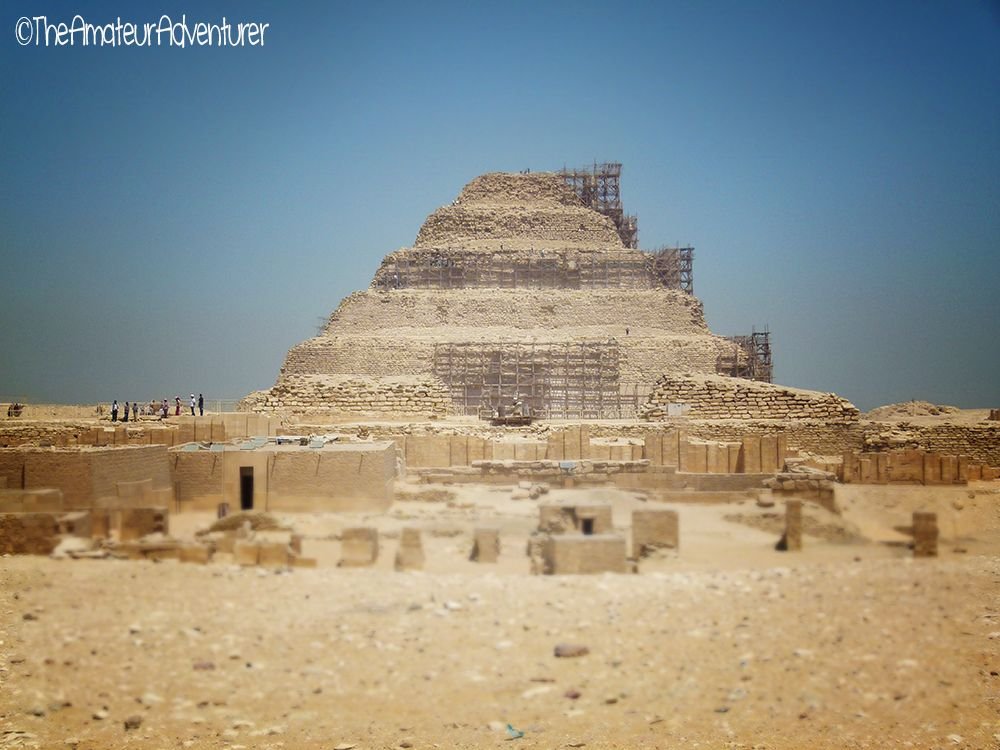
The site’s best-known feature is the step pyramid, the world’s oldest major stone structure. It was built in the 3rd Dynasty (around 2630 BC) for King Djoser and its construction was overseen by his vizier Imhotep.
All over Saqqara can be found tombs of different periods. Those open to the public date to the Old Kingdom.. Around the northern-most of Saqqara’s pyramids is that of the 6th Dynasty pharaoh Teti. Adjacent to the pyramid are the mastabas (free-standing tombs of earlier periods) of his officials, some of whom had marvelous reliefs created for themselves.
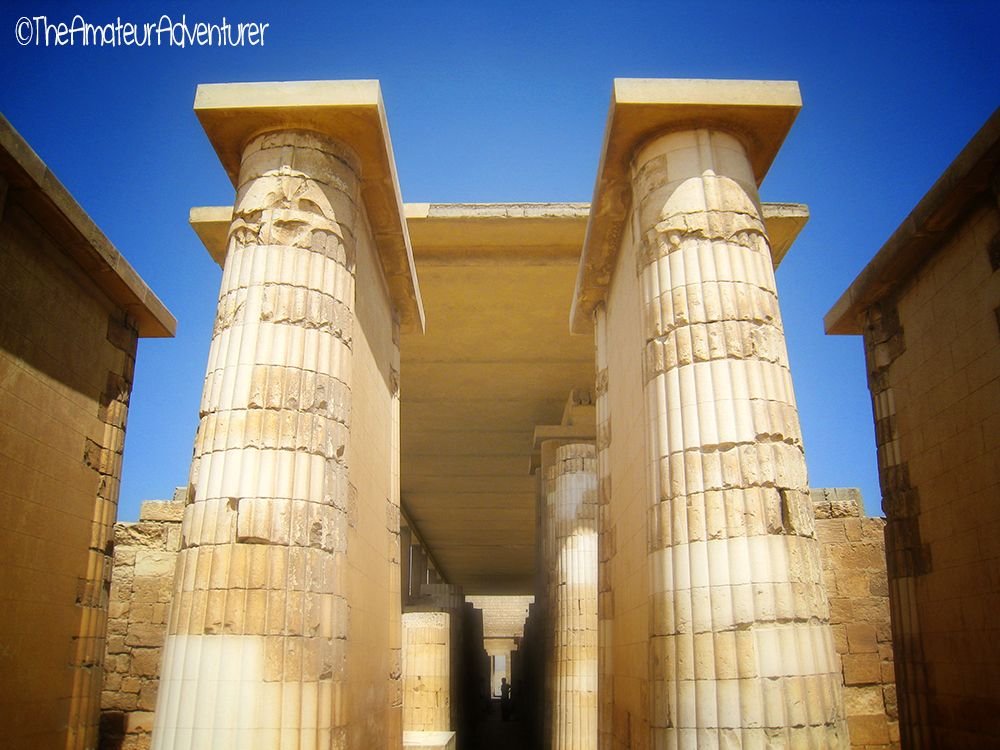
Street vendors in Saqqara are particularly persistent and have a number of scams to try to get you to take them as guides. Anyone waving key at you and saying you cant see the tombs unless they come and unlock them are not to be believed, there are no additional charges to see any of the areas inside the complex, even if tourist police ask you to pay. And when anyone says no money to take you to a tomb – they seem to suffer memory loss when you go to leave. This generally amounts to some arm waving, yelling in Arabic and me storming off telling them to “imshee” (go away).
Murals in the tombs at Saqqara
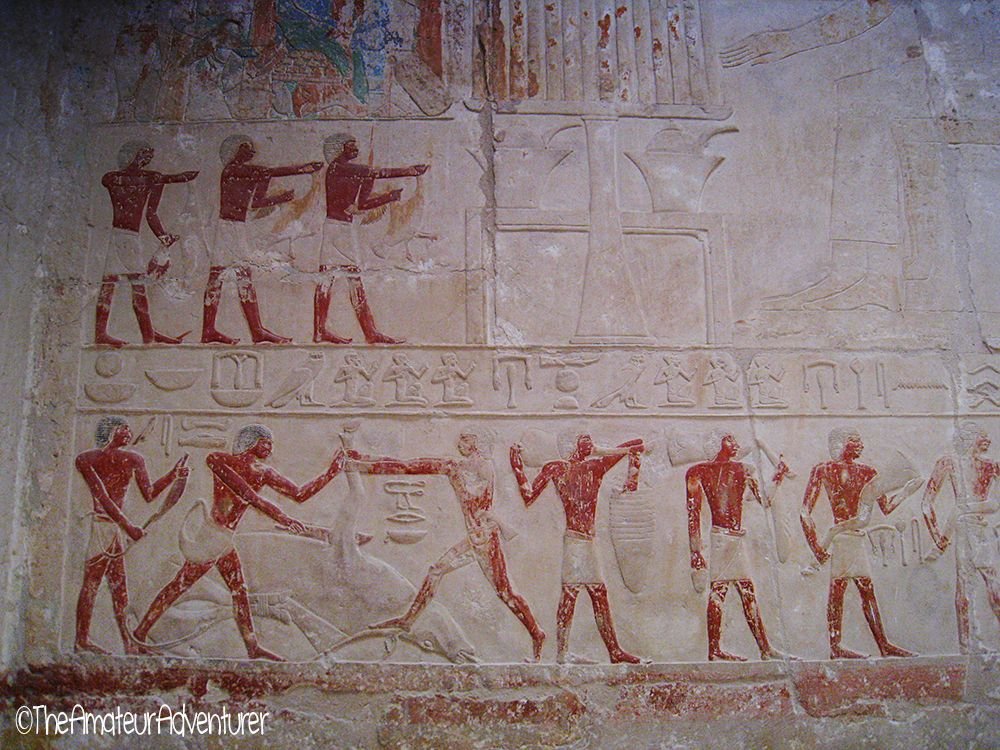
I'm used to it somewhat from Bali but this was more aggressive than I'd ever encountered - leaving me to actually feel unsafe at times - so much so I was ready to leave Egypt, though we'd only just arrived. I would highly recommend you visit Saqqara with a guide if you are at all nervous or unable to deal with the vendors.
The Pyramids of Giza
The Pyramids of Giza are the most famous monuments of ancient Egypt. These massive stone structures were built around 4500 years ago on a rocky desert plateau close to the Nile. But the intriguing Egyptian pyramids were more than just tombs for kings. The mysteries surrounding their symbolism, design and purpose have inspired passionate debate. It is likely that many of these mysteries will never be solved.
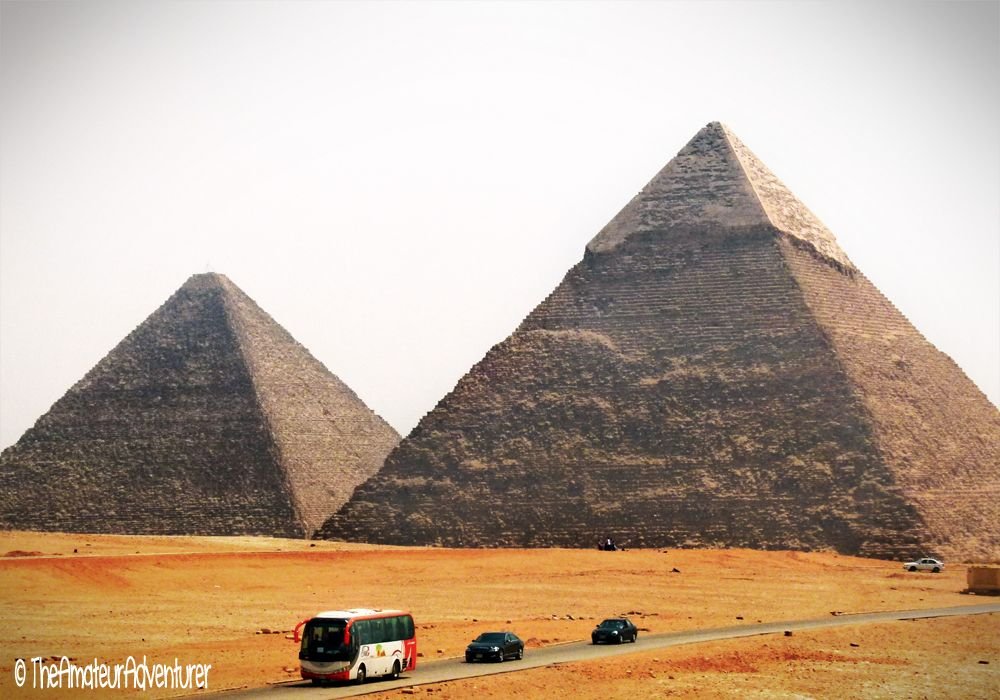
The Great Pyramid of Khufu is the largest of the pyramids. Khufu (Cheops to the Greeks) ruled about 2589-2566 BCE when the Old Kingdom of Egypt was nearing a peak of prosperity and culture. His pyramid is astonishing for both its size and mathematical precision.
Some believe that the pyramid was built by slaves but this is not true. One hundred thousand people worked on it for three months of each year. This was the time of the Nile’s annual flood which made it impossible to farm the land and most of the population was unemployed.
The pyramid was originally encased in smooth, white limestone that must have gleamed in the harsh Egyptian sun. Unfortunately, this was plundered long ago to provide building materials for Cairo. This colossal structure was originally 146 meters high until it lost this outer casing and its capstone.
Up close and personal with the pyramids
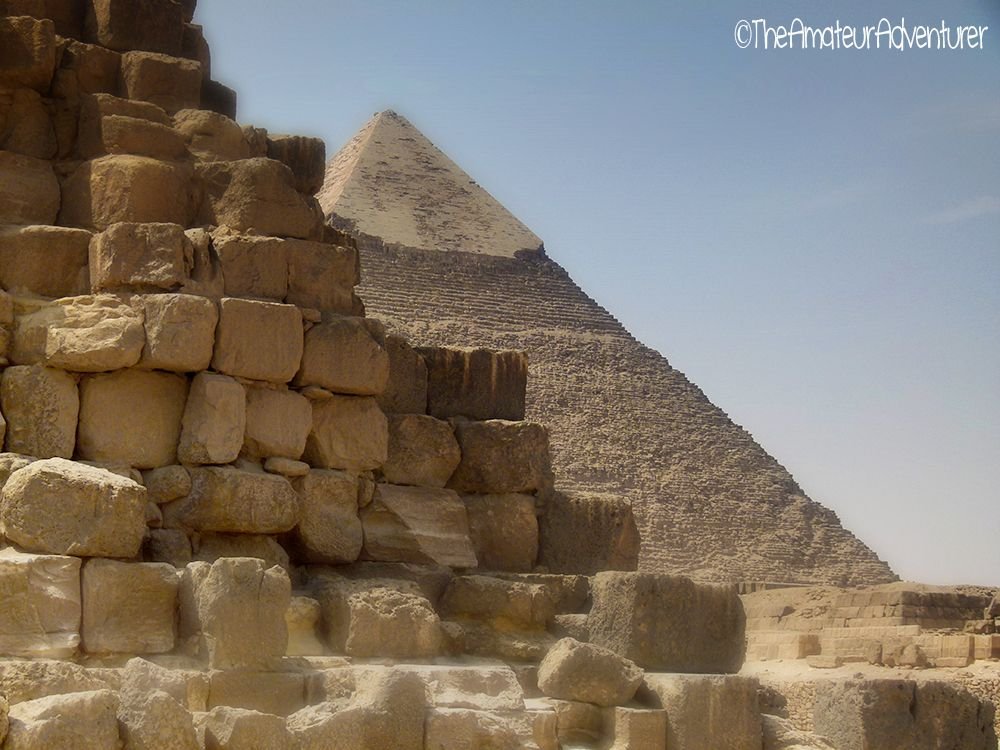
The Pyramid of Khafre, is the second-largest of the Giza pyramids and the tomb of the fourth dynasty pharaoh Khafre (Chefren). Many people mistakenly believe this to be the great pyramid as in photos it looks to be the largest of the three. Khafre, out of respect for his father built a smaller pyramid, but cleverly built on higher ground, giving it the appearance of being substantially taller.
The Pyramid of Menkaure, is the smallest of the three Pyramids of Giza. It was built to serve as the tomb of the Fourth Dynasty Pharaoh Menakaure, grandson of Khufu.
An optical illusion
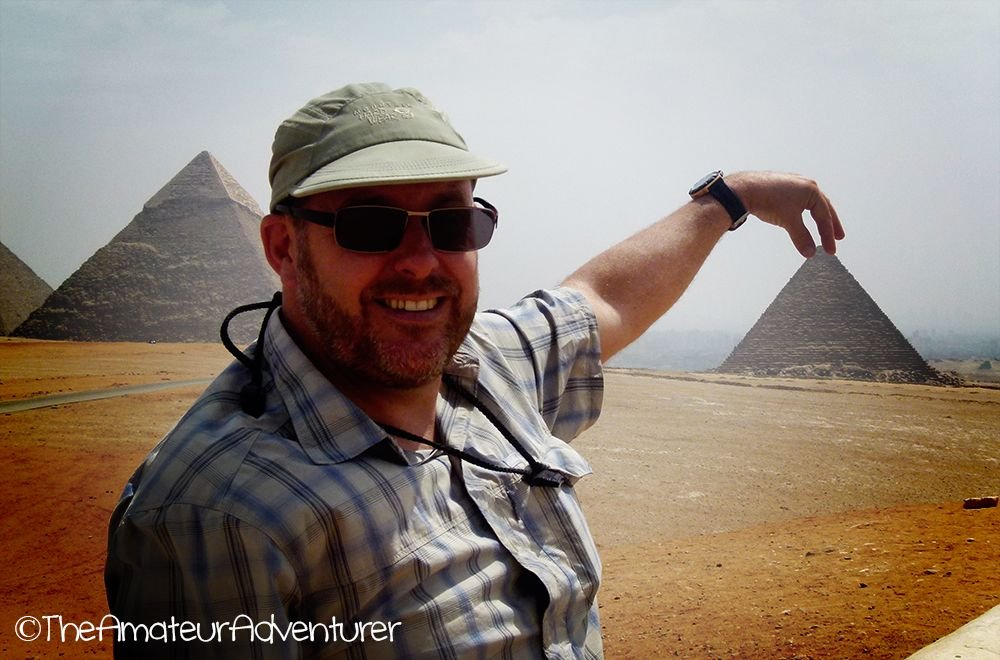
The Sphinx
The Sphinx is one of the best known monuments on Earth and dates back over 4,500 years to the Old Kingdom and the time of king Khafre – builder of the second largest pyramid on the Giza plateau on Cairo’s outskirts. The head of the Sphinx probably depicts Khafre, while the body is that of a recumbent lion.
The Sphinx is about 73.5 metres in length. It was originally sculptured from a limestone outcrop and, for most of its history, the Sphinx has been at least partly covered in sand. The first recorded clearing took place in the 18th Dynasty when a prince, who later became the pharaoh Thutmose IV, ordered that the sand be removed. This happened after he supposedly had a dream in which he was told that he would become pharaoh if he cleared the Sphinx.
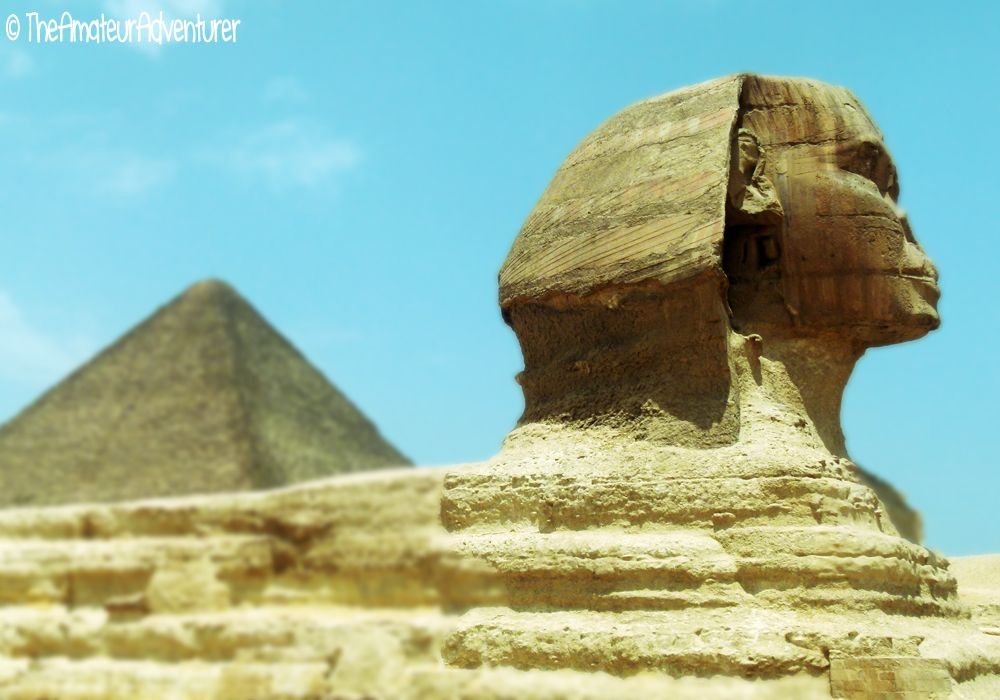
Unfortunately, in recent centuries, the Sphinx has suffered greatly from the influence of man and exposure to the environment. Numerous attempts have been made to restore the figure and additional modern limestone blocks have been added around the base.
The thing that astounded me was how close the Pyramids and the Sphinx actually were to the city. Photos give the impression that they are far out in the desert, a very wrong impression, I discovered!
The Pyramids and Sphinx are incredibly close to the bustling city
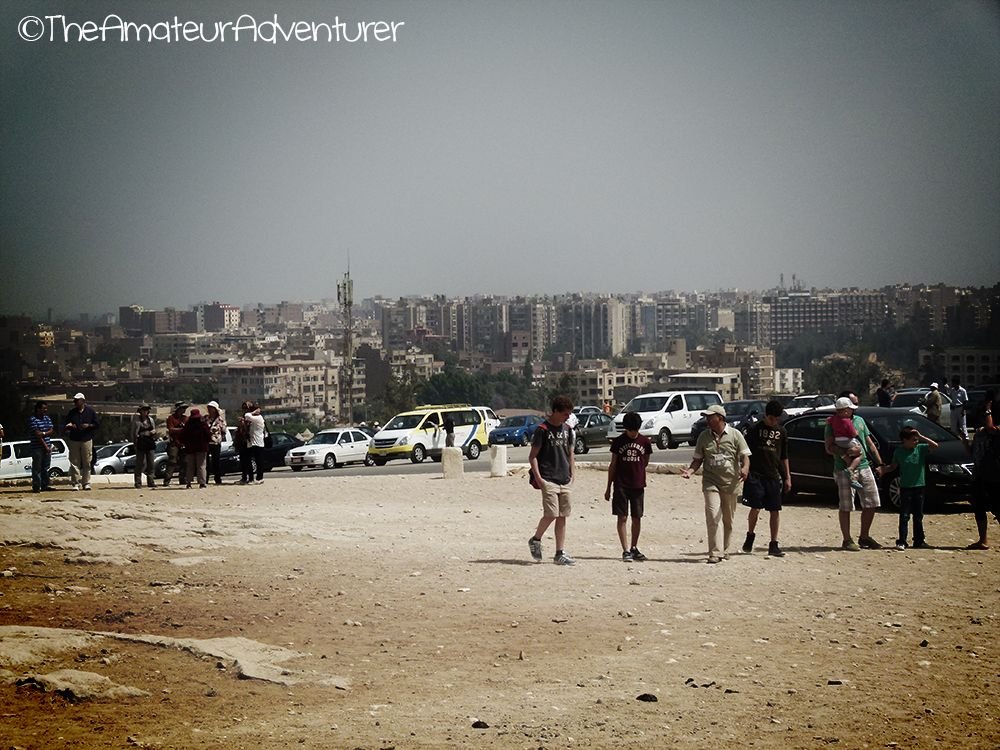
After four days in the mayhem of Cairo, I found myself missing the relative calm that had been Morocco (yes even the Fes medina is an oasis of quietness in comparison). In all honesty, had I not been about to embark on a small group adventure tour I probably would have packed up and left Egypt after day one. But I'm glad I stuck it out. Egypt has ended up being one of the most amazing travel experiences I have had, so I'm glad I stuck through the craziness that is Cairo and got to see so many amazing places.
Bucketlist -tick!
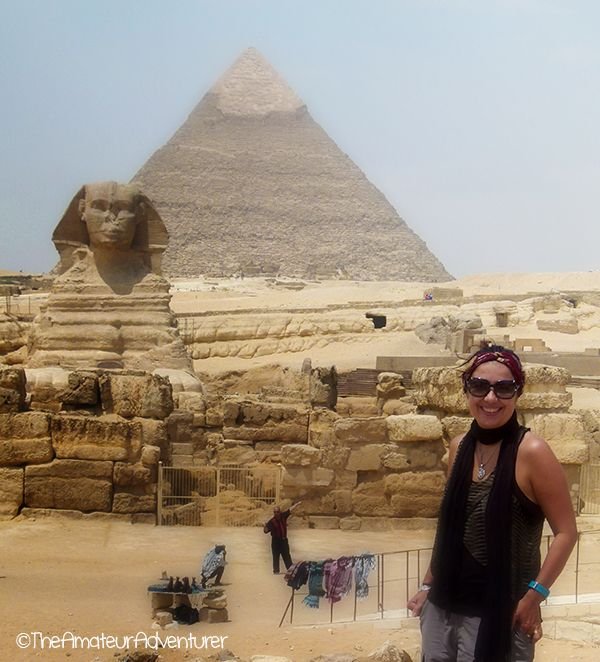
If you haven't already don't forget to check out my other adventures in Egypt - links can be found at the bottom of this post.
Tune in next time, to see where my adventures land us!
Steem on with Love and Light

If you enjoyed this post don't forget to UPVOTE and Hit that FOLLOW Button!
Let's All Share the Steemit Love!

Don't forget to come check out the teamaustralia tag and see what exciting things we are all up to in the land of Oz! It's full of Aussies and Aussie-lovers with great stories from when we are at home or loose in the world!
Thanks to @bearone for creating my beautiful teamaustralia banner which I love sooooo much! Don't forget to check out her posts and show her some love as well.
If you are a newbie and looking for help - or you just want to help support the minnows and grow this wonderful platform of ours - please consider checking out minnowsupportproject. This is a fantastic initiative to help everyone grow together and is full of fantastic advice for anyone starting out. You can find out more about it here.

(Logo and Banner Created By @justcallmemyth - another great Steemian you should check out and support)
Source:
Photos are the work of the author except where credited otherwise
This is an edited version of an original post on my travel blog which can be found athttp://theamateuradventurer.com/crazy-cairo/ CONTENT IS ORIGINAL
You can check out some of my other adventures here:
- Fitness Fanatic #2: Hiking for fitness and pics of my favourite hikes
- Amateur Adventures #26: Amazing Karnak - Monument to the Pharaohs
- Amateur Adventures #27: A Trip to The Valley of the Kings Part 1: Hot Air Ballooning
- Amateur Adventures #28: A Trip to The Valley of the Kings Part 2: Important Tips for Donkey Riding
- The seasons are changing. Time for an energetic spring clean!
- Amateur Adventures #29: A Shakesperean Tragedy of Egyptian Proportions
- Amateur Adventures #30: Crazy Cairo Part 1: The Coptic Precinct and Cairo Museum
